MicroBrewr 031: Accounting solutions for your craft brewery
Podcast: Play in new window | Download | Embed
Subscribe: RSS
So you want to start a brewery and you don’t know what to do about bookkeeping and accounting. Audra Gaiziunas, Brewed For Her Ledger, guides us through accounting solutions for your craft brewery.
With a degree in accounting and a Masters of Business Administration, Audra worked as controller for Dogfish Head Craft Brewery. Later, she served on the board of North Carolina Craft Brewers Guild and worked as CFO of Mother Earth Brewing.
Now Audra provides a “kind of one-stop shop, mercenary, CFO for hire” for craft breweries. She helps with accounting solutions such as business plans, pro-formas, costing templates, and software implementation. She also does operational audits and more.
Recently Audra won a business plan competition at Oregon State University to earn an internship at Ninkasi Brewing. At the brewery in Eugene, Oregon, she enhanced her first-hand experience in production, technical, and maintenance aspects of Ninkasi’s operations.
The 3 biggest mistakes she sees breweries make:
- Not having enough capital on hand. You’ll need more than 3 month’s cash on hand.
- Not planning for information flow. Set up processes to make sure information and documents flow efficiently from one department to another.
- Not having funds for contingencies. Set aside 10%-15% for unexpected expenses.
6 tools she suggests to manage your breweries finances:
- Set aside time each week to handle paperwork.
- Take a cash flow class at the community college.
- Use Microsoft Excel or simple accounting software to track your data.
- Ensure information is communicated between all departments of the brewery.
- Build a budget annually and review it monthly to stay on track.
- MOST IMPORTANT: Understand how much your beer costs at any given time, by beer type and by packaging type.
SPECIAL BONUS:
Ask Audra any question about accounting, finance, and strategy for your brewery.
Leave your questions in the comments section below.
Audra will keep watching the comments for the next 30 days to answer as many of your questions as she can.
Be sure to connect with Brewed For Her Ledger and thank Audra for being on the show and for helping us out with questions.
UPDATE: Thirty days is up, Audra is no longer monitoring the questions here. You can still reach her through the links below. Thanks for your great questions everyone!
Listener question:
From Orlando: How do some breweries buy or lease a building for sometimes years while completing renovations and licenses?
From Dan: How much capital does a brewery need to start? Where can they get the capital?
Book recommendation:
- The Brewers Association’s Guide to Starting Your Own Brewery by Dick Cantwell.
- Brewing Up a Business: Adventures in Beer from the Founder of Dogfish Head Craft Brewery by Sam Calagione.
- Beyond the Pale: The Story of Sierra Nevada Brewing Co. by Ken Grossman.
- Let My People Go Surfing: The Education of a Reluctant Businessman by Yvon Chouinard.
- Delivering Happiness: A Path to Profits, Passion, and Purpose by Tony Hsieh.
- Made to Stick: Why Some Ideas Survive and Others Die by Chip Heath.
Check out the entire list of recommended books, click here.
An upcoming beer style:
Session lager
Other resources:
- U.S. Department of the Treasury, Alcohol and Tobacco Tax and Trade Bureau
- Directory of State Alcohol Beverage Control Boards
- MicroBrewr 008: Raise Money for Your MicroBrewery Without Having to Give Away Any Ownership w/ CrowdBrewed, April 22, 2014.
- MicroBrewr 010: How Ninkasi Went From a 15BBL System to the 30th Largest Craft Brewery in the Nation w/ Ninkasi Brewing, May 6, 2014.
- What Does Your Beer Really Cost? Establishing and Effective Beer Costing Program in the Brewpub by Scott Metzger, The New Brewer, January/February 2012.
- What San Francisco Giants Brewfest taught me about the future of lagers by Nathan Pierce’s blog, June 7, 2014.
You can reach Audra Gaiziunas and Brewed For Her Ledger at:
- www.brewedforherledger.com
- Facebook: brewedforherledger
- Twitter: @BeerMudderAudra
- LinkedIn: Audra Gaiziunas, MBA
If you like the show, please subscribe in iTunes or Stitcher. When you subscribe, it’ll let you know when there’s a new episode, you won’t miss a thing!
You might also like:
MicroBrewr 033: Wastewater treatment solutions for a craft brewery, with Brewery Wastewater Design in Montrose, Colorado.
Support MicroBrewr
Help keep MicroBrewr on the air. CLICK HERE for ways you can help.

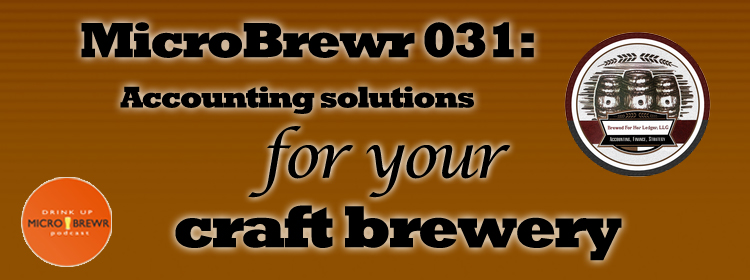


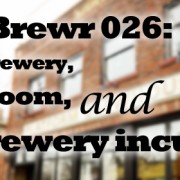

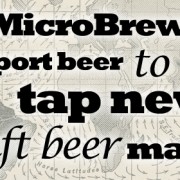
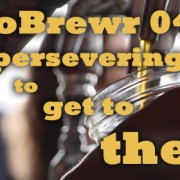
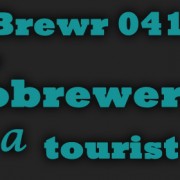

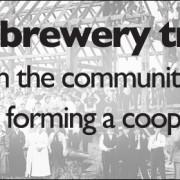
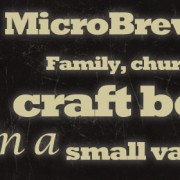


Just some general questions about the importance of winning some home brewing competitions for starting up a brewery. Do you see this often mentioned in business plans? Does it help when trying to get financing to help establish credibility?
What kind of expenses should I account for in relation to licencing and bonding? Lawyers and accountants? Are there any not so obvious or hidden costs that I should account for? Also, I’m trying to put in a 30 bbl system in Hawaii, how do I estimate construction, installation, and shipping costs for equipment and ingredients?
Ken, while winning homebrewing competitions are important in garnering support from the local craft beer enthusiasts, I have seen mixed reactions when including these accolades in the business plan. By mixed I mean positive to completely neutral (didn’t affect the decision to fund). The financials behind translating those wins onto a much bigger playing field are a lot more important. So you won some beer competitions…. awesome. Now how are you going to distribute these award-winning beers? Why distribute this way? How are you going to scale them on a commercial system, and what do the margins look like by package type? Establishing credibility with a quality brew recipe is important, but how you’re going to put that beer into the hands of the consumer, and how you’re going to survive and thrive as a business entity, at least in the eyes of a lending institution and/or major investor, is even more important.
Zach,
The precise costs differ by state and amount of coverage you’re required to carry by your lending institution, state regulation, and perhaps even private equity by agreement. Lawyers for licensing and to have a general counsel on hand for trademark, IP, and ownership agreements. Bookkeeper for everyday transactions (which is inexpensive), an accounting firm to complete your annual audit (pending lending institution requirements)/tax return, and someone independent to review your financials once a quarter to ensure your filings to the TTB and local DOR are reasonably accurate and complete. Repairs and maintenance is a key line item people miss or typically understate. I have also seen financials missing credit card processing fees, employment taxes, sales and use tax (if not treated as a pass-through), real estate tax (for those who own), and various supporting suppliers for point-of-sale items. A key mistake made in the P&L is the assumption that 100% of what is produced will be sold. Not only does that miss accounting for production losses, but it also assumes that you will sell 100% of your product by that exact package type with no inventory on hand at year-end. In short, sales are well overstated, and that’s dangerous territory to tread when investors are holding you to your plan. The best way to estimate all costs for the buildout and ingredient purchases is to obtain multiple quotes and average them. You may also have some room for negotiating those costs based on additional services provided or how the agreement is structured. For ingredients, most suppliers have a price list already established based by total weight (so get those recipes scaled to 30BBL). Get hop contracts established early.
Great questions! Thanks for the insight, Audra.
Audra,
Assuming you produce enough product, what % markup do you typically see or recommend to cover the cost of ingredients and make a profit. I have heard 30-33% in the general retail market but have heard little since getting into the beer market.
Do you ave a good POS (Point of Sale) system you could recommend for a tap room for optimal for inventory and record keeping?
Thanks for a great podcast as well as your time and attention!
Jimmy,
Your % markup will depend on what you want to sell your product for to the end consumer (what we call as “frontline”, or “price to consumer, PTC”), as well as your distribution strategy: self versus third party, keeping your taproom operations separate from production operations. Investigate shelf prices of other brands by package size and type, then determine which style and brand you determine your proposed beer brand to be as comparable. What will your sales strategy be to compete with the others on the shelves?
Most of the time you don’t have as much freedom with pricing as you believe you do. You will have a tight range you want to stay within. You will likely have some more freedom in terms of controlling costs through your negotiations with your raw materials suppliers. Then you take that resulting margin and invest in what marketing and sales activities (sales, general, administrative) you can afford, setting aside funds for reinvestment in the brewery’s growth.
When you have a solid grasp on your raw materials and packaging costs, that side of the equation has been pretty much determined, with some flexibility for costs to continue decreasing as operations scale.
The pricing side of the equation is usually determined by contract or the market. Thus, you simply work with what you have left over. Your costs will constantly fluctuate, so your margins will fluctuate as well. Obviously, your markups can not be fixed. Otherwise your pricing would constantly change.
Be more concerned with margin versus markup. Here’s the difference between the two: http://strategiccfo.com/wikicfo/margin-vs-markup-2/
As an independent consultant, I try to stay away from recommending one versus another software for POS. I’m not paid by any software company to sell their software, so I’d like to keep it as unbiased as possible. I would encourage you to look into HarborTouch, Aldelo, and TouchBistro if you seek cost-efficient options. Most taproom operations require a restaurant versus a retail POS (many retail POS systems don’t allow for tips). This, of course, depends on your business model. Digital Dining gets more pricey, but is also more robust.
Ekos Brewmaster out of Charlotte, NC just entered the market this spring, and I would demo their product as well. They’re not quite an ERP but do provide a lot of functionality for QuickBooks users.
Thanks for the great questions, everyone. And thanks, Audra, for helping us out with these issues. We all learned a lot.
Audra,
I am a student intern interested in learning more about breweries and handling their finances. What type of things go into a business plan for a brewery? What things does a brewery look for when choosing someone to help them with their finances? What types of challenges do breweries face in everyday operation hat make accounting for their finances difficult? What outside services do breweries seek most in relation to their finances? How would someone who offers these outside services present themselves to appear attractive to the brewery?
Thank you!
Wow, tons of great questions, Amanda. For the first one, check out MicroBrewr Podcast 064: How to write a business plan for a brewery.
Hi Audra-
I hoping you can enlighten me on COGS [cost of goods sold]. Specifically, what are the cost areas that should be included in COGS, and are there any industry guidelines for what should these costs be limited to? For example, to produce a sixtel of pale ale, what costs should I be considering, and what are reasonable dollar amounts for each, in order to land on competitive pricing?
Thanks-
Tim